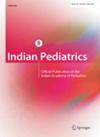Feasibility, Safety, and Effectiveness of Neonatal Air Transport in India: A Case Series.
IF 1.5
4区 医学
Q2 PEDIATRICS
引用次数: 0
Abstract
Fifteen sick neonates were transported to higher-level neonatal intensive care units (NICUs) using specially equipped aircraft with trained medical teams. The median (Q1, Q3) one-way distance traveled (km) was 710 (689, 1224.5), and the median (Q1, Q3) transit time and airborne time were 6 (5.5, 7) and 1.25 (1.22, 2.15) hours, respectively. Thirteen neonates needed mechanical ventilation and five needed inotrope support during transit. The median (Q1, Q3) NICU stay was 20 (13.5, 35) days. Twelve neonates (80%) were discharged, two (13.3%) left against medical advice, and one died. Air ambulance is a feasible, effective, and safe mode of transportation of critically ill neonates in India.
可行性,安全性和有效性的新生儿航空运输在印度:一个案例系列。
15名生病的新生儿被用配备特殊设备的飞机运送到更高级别的新生儿重症监护病房(新生儿重症监护病房),并配备训练有素的医疗小组。单程旅行距离(km)中位数(Q1、Q3)分别为710(689、1224.5)km,过境时间(Q1、Q3)中位数为6(5.5、7)h,机载时间(1.22、2.15)h。13例新生儿在转运过程中需要机械通气,5例需要肌力支持。NICU的中位(Q1, Q3)住院时间为20(13.5,35)天。12名新生儿(80%)出院,2名(13.3%)不顾医嘱离开,1名死亡。空中救护在印度是一种可行、有效、安全的危重新生儿运输方式。
本文章由计算机程序翻译,如有差异,请以英文原文为准。
求助全文
约1分钟内获得全文
求助全文
来源期刊

Indian pediatrics
医学-小儿科
CiteScore
3.30
自引率
8.70%
发文量
344
审稿时长
3-8 weeks
期刊介绍:
The general objective of Indian Pediatrics is "To promote the science and practice of Pediatrics." An important guiding principle has been the simultaneous need to inform, educate and entertain the target audience. The specific key objectives are:
-To publish original, relevant, well researched peer reviewed articles on issues related to child health.
-To provide continuing education to support informed clinical decisions and research.
-To foster responsible and balanced debate on controversial issues that affect child health, including non-clinical areas such as medical education, ethics, law, environment and economics.
-To achieve the highest level of ethical medical journalism and to produce a publication that is timely, credible and enjoyable to read.
 求助内容:
求助内容: 应助结果提醒方式:
应助结果提醒方式:


